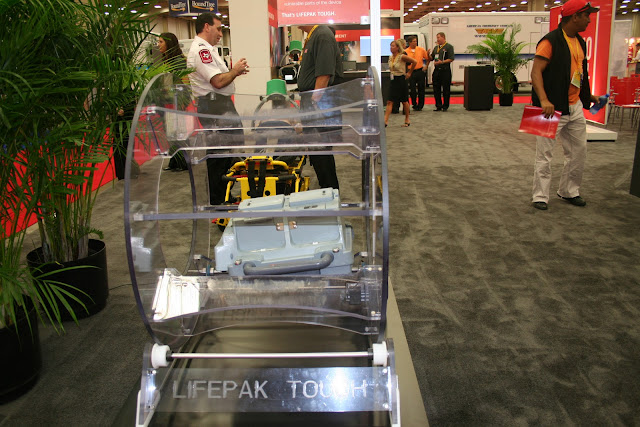Canarias se incorporará a partir del 6 de octubre al grupo de Comunidades Autónomas que ha regulado la obligatoriedad de la instalación de Desfibriladores Semi Automáticos (DESA) en determinados espacios públicos y empresas.
Así, quedan obligados a disponer de un DESA en condiciones aptas de funcionamiento y listo para su uso inmediato estaciones e intercambiadores de transporte terrestre en poblaciones de más de 50.000 habitantes; los aeropuertos; puertos comerciales; hoteles con más de 1.000 plazas; centros y complejos deportivos públicos de poblaciones de mas de 50.000 habitantes y con una afluencia media diaria superior a 1.000 usuarios; establecimientos dependientes de las administraciones públicas de poblaciones de más de 50.000 habitantes y una afluencia media diaria superior a 1.000 usuarios; teatros municipales, auditorios y salas de congresos con un aforo superior a 1.000 personas o grandes establecimientos comerciales y centros comerciales.
Tras Cataluña, Andalucía y País Vasco, Canarias en la cuarta Comunidad Autónoma que regula la disponibilidad y uso de los DESA. Hasta ahora, la normativa canaria regulaba aspectos administrativos y formativos asociados al uso de desfibriladores pero no establecía ningún tipo de obligatoriedad, informa la empresa B+Safe en un comunicado.
“El nuevo reglamento es un paso clave en el desarrollo de una cultura de cardioprotección similar a la que existe en la sociedades más avanzadas, entre las que destacan algunas ciudades norteamericanas que aseguran el acceso a un desfibrilador en menos de 3 minutos. La disponibilidad de un DESA permite salvar miles de vidas al año en todo el mundo y en la mayoría de las paradas cardiacas establece la frontera entre la vida y la muerte de la persona afectada. Su vida dependerá de nuestra capacidad de respuesta en los primeros 5 minutos”, destaca el director general de la compañía, Nuno Azcona.
La cardioprotección es una tendencia emergente orientada a la protección del corazón en caso de episodios cardíacos. El gran número de muertes por paro cardíaco en la población ha animado a gobiernos, empresas, entidades y asociaciones a concienciar a la población y tomar medidas que permitan revertir la situación gracias a la creación de zonas o espacios cardioprotegidos.
Estas zonas cuentan con, al menos, un desfibrilador, con mantenimiento garantizado y personas adecuadamente formadas para poder garantizar una rápida actuación en caso de paro cardíaco repentino -para conseguir que vuelva a latir el corazón de la persona afectada- hasta la llegada de los servicios médicos de emergencia.
PASOS CRÍTICOS
Para que las posibilidades de supervivencia ante un paro cardíaco repentino sean óptimas, informa la compañía, se debe realizar de forma inmediata una resucitación cardiopulmonar (RCP) que permita mantener el flujo necesario de sangre oxigenada al cerebro hasta que se restablezca el ritmo cardíaco normal mediante la descarga eléctrica suministrada por un desfibrilador.
El tiempo máximo para aplicar la desfibrilación a una persona que ha sufrido un paro cardiaco repentino es de un máximo de 5 minutos.
Hay identificados cuatro pasos críticos para tratar el paro cardíaco repentino, denominados ‘cadena de supervivencia’ y que pasan por reconocimiento y llamada al servicio de emergencia; rápida resucitación cardiopulmonar (RCP); desfibrilación temprana y cuidados post-resucitación.
En Europa, el paro cardiaco es una de las primeras causas de mortalidad, y en España se dan más 40.000 por año. Aquí, tras una enfermedad cardiaca, el índice de salvación se sitúa en un 4 por ciento mientras en Estados Unidos se sitúa ya en un 50 por ciento gracias a la implantación masiva de desfibriladores.
El plazo de intervención para salvar a una víctima es de no más de 4-5 minutos y por cada minuto que se pierde, hay un 10 por ciento menos de probabilidad de supervivencia.




















